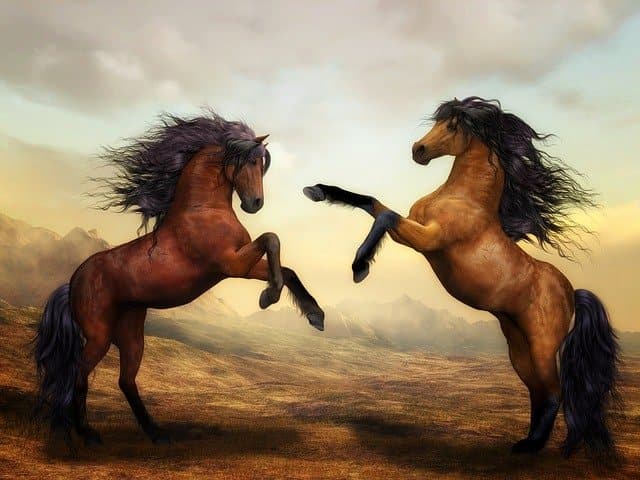
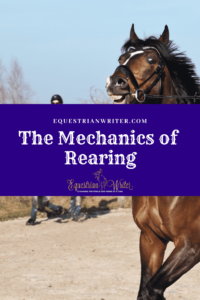
Rearing is every rider’s nightmare. The biggest fear for most riders when a horse rears is that they will flip over backwards. This is a legitimate concern for some horses, which is why this situation should be handled carefully. However, once you understand the mechanics of rearing you will understand that rearing actually isn’t as dangerous as bucking. So, what is rearing really? How does it work? What causes it? Most of all, how do you prevent it?
The Mechanics of Rearing
Rearing boils down to one simple concept; a lack of forward motion. It requires the front end to come off the ground. Therefore, unlike bucking, rearing requires your horse to fully cease forward motion before he can rear. Really, a rear is just a horse balking in place, balking up instead of backwards. With that in mind, while it looks quite scary, it is actually a bit easier to avert than bucking.
Like bucking, rearing also requires all of your horse’s body parts to be in a perfectly straight line. His spine must be straight with his head, neck, shoulders, rib cage, and shoulders in perfect alignment. This is vital for your horse to maintain his balance in the rear.
Related Content: The Mechanics of Bolting (and How to Prevent it)
Signs of Rearing
Knowing the signs of an impending rear are vital to averting it.
- balking
- lack of forward motion
- raised head
- rooting at the bit
Many horses will also “bounce” on the front end before going into a full rear. This basically mean they they do several mini rears where their front feet barely come up off the ground before they go into a full rear.
The Number One Cause of Rearing
Why do horses rear? Sometimes it is due to pain, but many time it is due to frustration. In my experience, a horse that is in pain or unwell in any way is more likely to buck. Rearing, on the other hand, is often a last ditch effort to communicate frustration. A rearing horse is a trapped horse.
Many riders with a horse that rears are heavy handed on the bit. They are constantly pulling on his mouth even as they try to push him forward. I see this many times with barrel racers. Ok, if I’m being perfectly honest, I did this more often than I would like to admit early in my career as a barrel racer too. As they approach the gate, the horse gets fired up. The rider feels the need to hang onto the horse’s mouth to hold him back. The horse knows that they’re about to run and want to go forward, but the rider cranks back on the horse and he hits the bit which essentially puts up a wall that prevents him from going forward. So, what happens when all that energy hits a wall? It’s got to go somewhere. It can’t go forward anymore so it goes up.
[clickToTweet tweet=”Rearing is often a last ditch effort to communicate frustration. A rearing #horse is a trapped horse. #247equestrian Read more about the mechanics of rearing and how to prevent it here:” quote=”Rearing is often a last ditch effort to communicate frustration. A rearing horse is a trapped horse.”]
How to Prevent Rearing
The simplest and most effective way to prevent rearing is to maintain forward momentum. In this case, faster is better. That is not to say that you should spur your horse into an uncontrolled gallop. However, a walk — even a brisk one — may not be enough to deter a determined rearer. You must also remember not to hang on the bit! Remember, when all that energy hits a wall, it’s got to go somewhere. If it can’t go forward, it will go up.
Unlike with bucking, an extended trot or a canter is acceptable for staving off a rearing episode. It really does not matter which gate you choose, only that you get the horse moving briskly and with purpose. As long as the horse is moving forward, he is not rearing. Keeping him occupied with circles, spirals, and leg yields is a good way to keep his mind off of attempting any silliness.
That being said, you need to know your horse. There are some horses that will get frustrated with their inability to rear and turn to bucking instead. If you suspect that horse may be one of these, don’t canter. Familiarize yourself with the proper way to stave off bucking attempts and implement them. Those methods are just as effective for staving off rearing.
How to Defuse the Situation
What do you do if you missed the warning signs and your horse starts rearing? You’ve got get all four feet on the ground before you can reestablish forward motion. Now, I need to insert the obligatory disclaimer here. Just because rearing is less dangerous that bucking doesn’t mean it’s not dangerous. These techniques should only be used by someone who has enough experience to know what they are doing. One wrong move and you could bring the half ton horse down on top of you.
Now that that’s out of the way, if you feel your horse starting the rear, shift your weight forward. Don’t lean forward. You need to keep yourself perpendicular to the ground. Remember the number one rule of riding: if someone were to pull your horse out from under you, you should be able to land on your feet. So, even as the horse goes up, you shift your weight to balance and stay perpendicular to the ground. To you, it will feel like leaning forward because you are closing the gap between yourself and the horse’s neck. However, if done right, you actually won’t change position much.You must be careful not to throw your weight forward as this could cause your horse to overbalance and come down hard, injuring himself and possibly falling on top of you. But, shifting you weight can often encourage him to put those feet back on the ground. Make sure you aren’t choking up on the bit and as soon as those feet hit the ground, get him moving forward. Don’t give him time to even think about rearing again.
How NOT to Defuse the Situation
Something to remember is to never try to unbalance the horse. We’ve discussed many times now how the horse’s hindquarters are his engine and disengaging them is like putting on the hand break. I also mentioned in the beginning of this article that a horse must have all of his body parts in a straight line in order to execute a rear. Some readers might be thinking ahead and coming up with the brilliant idea of yielding the hindquarters out from under him and taking away his head. This does work if you do it before he actually rears. But, the moment his front feet leave the ground and he has committed to the action of rearing, it becomes far too late to do either.
Think about it for a moment. Your horse uses his neck to balance. Horses were built to balance on four legs, not two. Therefore, a horse rearing back on two legs is far more unsteady than when he is standing four legs. If you take away his head, you take away his ability to balance. He is balanced on his hind end. If you take away his hind end, there is nothing left on which to balance. Suddenly, a half ton of frustrated horse comes crashing down — either sideways or over backwards — on top of the rider. A horse that falls in such a manner is likely to snap his spine and crush his rider at the same time. That definitely does not count as successfully defusing the situation in my book.
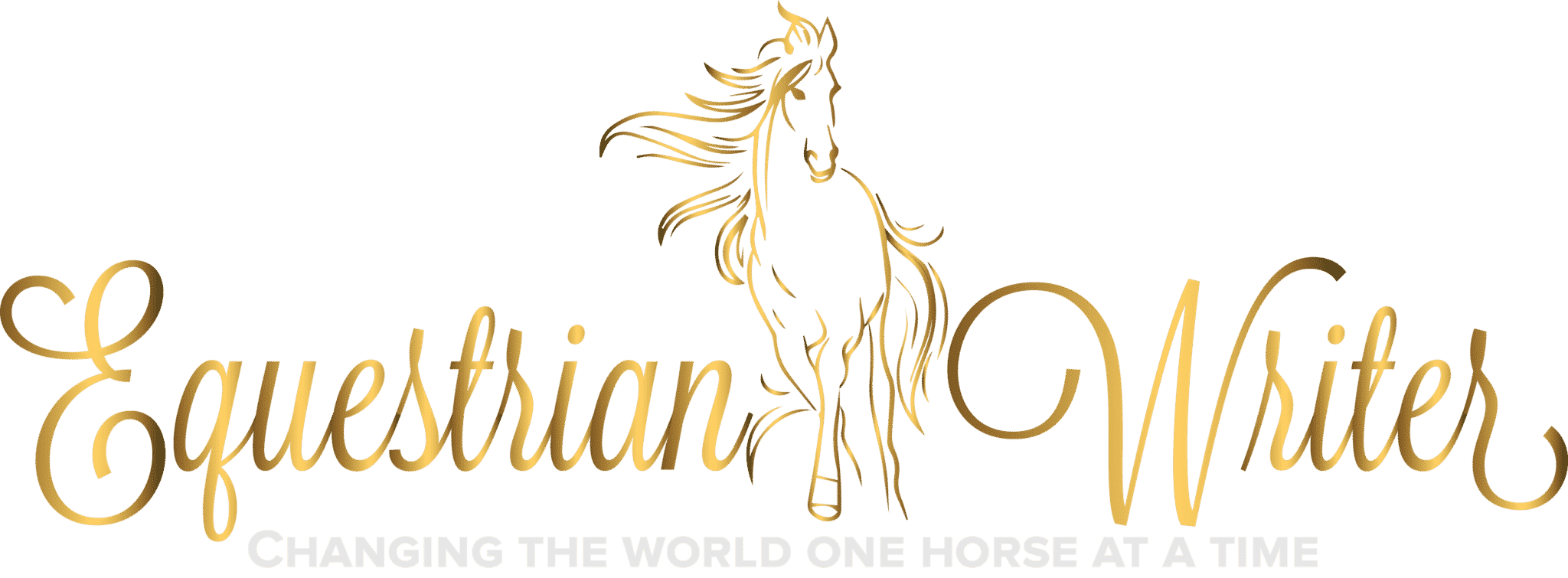





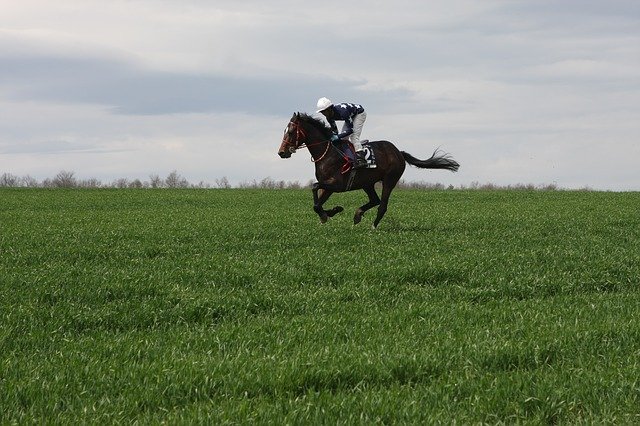
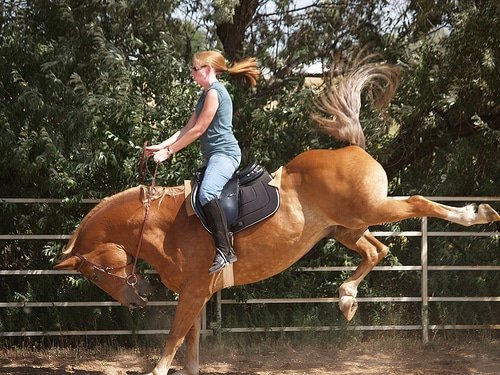
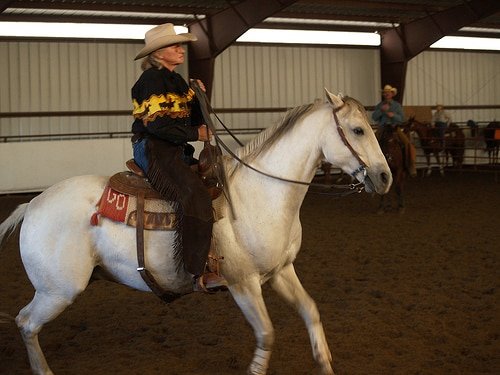

If your horse rears and comes back down, can you circle him to keep him from rearing again? My horse will rear out of fear (dogs or very scary cattle will do it) he reared up last summer when we rode to a neighbors with three smallish dogs. The dogs came barking up to us and he reared, when he came down and settled, I dismounted, led him to their arena and remounted. I was wondering if I should have circled him after he came down? I have discovered, if I try to just move off from the scary thing, he will start rearing THEN bucking, which will definitely unseat me.
Thanks,
Stacey
Yes, that will work. The important thing is to maintain forward motion and not let him get all of his body parts in a straight line. Circling him will prevent both bucking and rearing. If you are confident enough, it is good to do things like figure eights where you are changing directions, keeping him engaged, and making him think about something other than throwing a tantrum. Frankly, from what you have said, it sounds like your horse has gotten in the habit of rearing or bucking as an excuse to get out of a situation he doesn’t like. Right now it is dogs and cattle. But, eventually it will spread to other things until he starts rearing at every little thing that strikes his fancy.